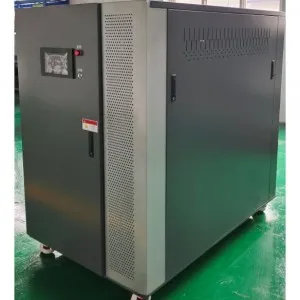joulu . 03, 2024 22:37 Back to list
Design and Applications of Water Tube Heat Exchangers in Modern Engineering
Understanding Water Tube Heat Exchangers
Water tube heat exchangers are crucial components in various industrial applications, notably in power generation, chemical processing, and HVAC systems. These heat exchangers are designed to transfer heat between two fluids, one of which usually is water. The unique design and functionality of water tube heat exchangers contribute to their efficiency and effectiveness in managing thermal energy.
Design and Structure
The primary structure of a water tube heat exchanger consists of a series of tubes made from materials such as steel or copper, which are specifically chosen for their thermal conductivity and resistance to corrosion. In contrast to shell-and-tube heat exchangers, in which one fluid flows through a large shell and the other through tubes, water tube heat exchangers allow water (or steam) to flow through the smaller tubes. The other fluid, often hotter or colder, moves around the tubes, facilitating heat transfer.
The design can vary, but typically water tube heat exchangers have a header at both ends. The headers direct the flow of water into multiple tubes, maximizing the surface area for heat exchange. This design leads to better heat transfer efficiency compared to other types of exchangers.
Working Principle
The working principle behind a water tube heat exchanger is relatively straightforward. One fluid enters the tubes where it absorbs or dissipates heat. As hot water or steam flows through the tubes, heat transfers to the cooler fluid outside. Conversely, if the tubes contain a cooler fluid, they absorb heat from the surrounding hotter fluid. This process relies heavily on the principle of conduction, where heat moves from a higher temperature area to a lower temperature area until thermal equilibrium is achieved.
The efficiency of heat transfer in water tube heat exchangers is critical. Factors such as fluid velocity, temperature difference, and the properties of the materials used in construction all play a role in defining how effectively the system operates. Structured designs, like finned tubes, can further enhance performance by increasing surface area.
water tube heat exchanger

Applications
The versatility of water tube heat exchangers makes them suitable for a wide range of applications. In power plants, they are commonly used in steam generation systems, where water is heated to produce steam that drives turbines. In chemical processing, they regulate temperatures during reactions or distillation processes, ensuring optimal conditions to improve yields.
In HVAC applications, water tube heat exchangers provide the necessary temperature control for heating and cooling processes in commercial and residential buildings. Their ability to maintain consistent temperatures makes them a pivotal part of energy-efficient systems, leading to reduced operational costs and increased sustainability.
Advantages
Water tube heat exchangers have several advantages over other types of heat exchangers. Their compact design allows for installation in tighter spaces, making them ideal for modern industrial settings. Additionally, they have a higher resistance to pressure and are less prone to thermal fatigue and corrosion due to the smaller volumes of water they handle.
Moreover, the higher heat transfer coefficients in water tube designs allow for better thermal performance, which is critical in processes where maintaining specific temperatures is essential.
Conclusion
In conclusion, water tube heat exchangers are vital for efficient thermoregulation across various industries. Their unique structural design, combined with the principles of heat transfer they employ, offers important advantages over traditional heat exchange systems. As industries continue to seek more efficient and sustainable methods of operation, the role of water tube heat exchangers is set to grow, showcasing their significance in the future of energy management and thermal processing. Understanding their operation and applications is crucial for engineers and technicians working in thermal system design and management.
-
Durable Cast Steel Concrete Pipe Mold Bottom Rings & Base Trays
NewsAug.23,2025
-
Centrifugally Cast Iron Water Main Pipe for Reliable Mains
NewsAug.22,2025
-
Durable Centrifugally Cast Iron Water Main Pipe
NewsAug.11,2025
-
Centrifugally Cast Iron Water Main Pipes for Reliability
NewsAug.10,2025
-
High-Quality Centrifugally Cast Iron Water Main Pipes
NewsAug.09,2025
-
Durable Cast Iron Water Main Pipe & Drainage Solutions
NewsAug.08,2025


